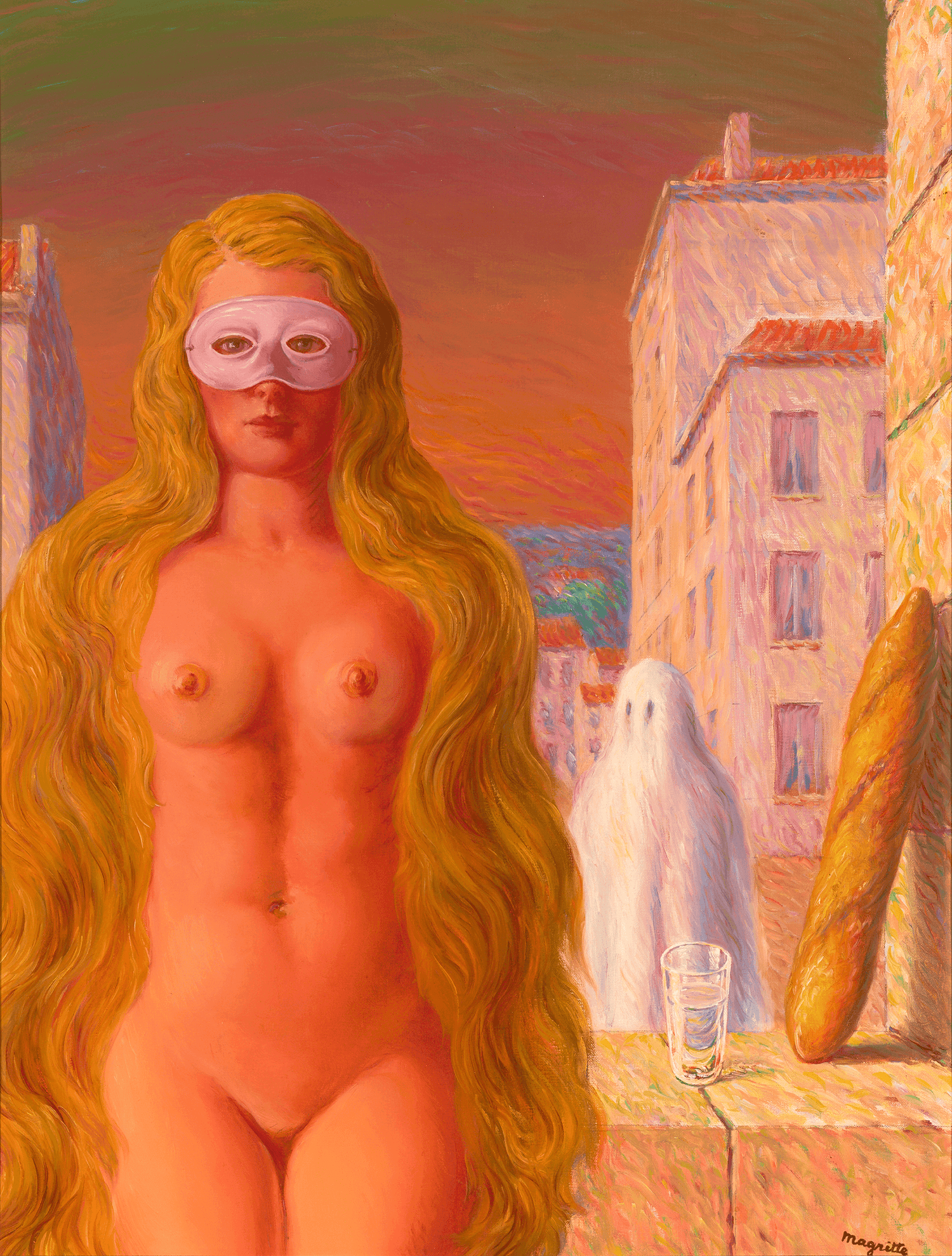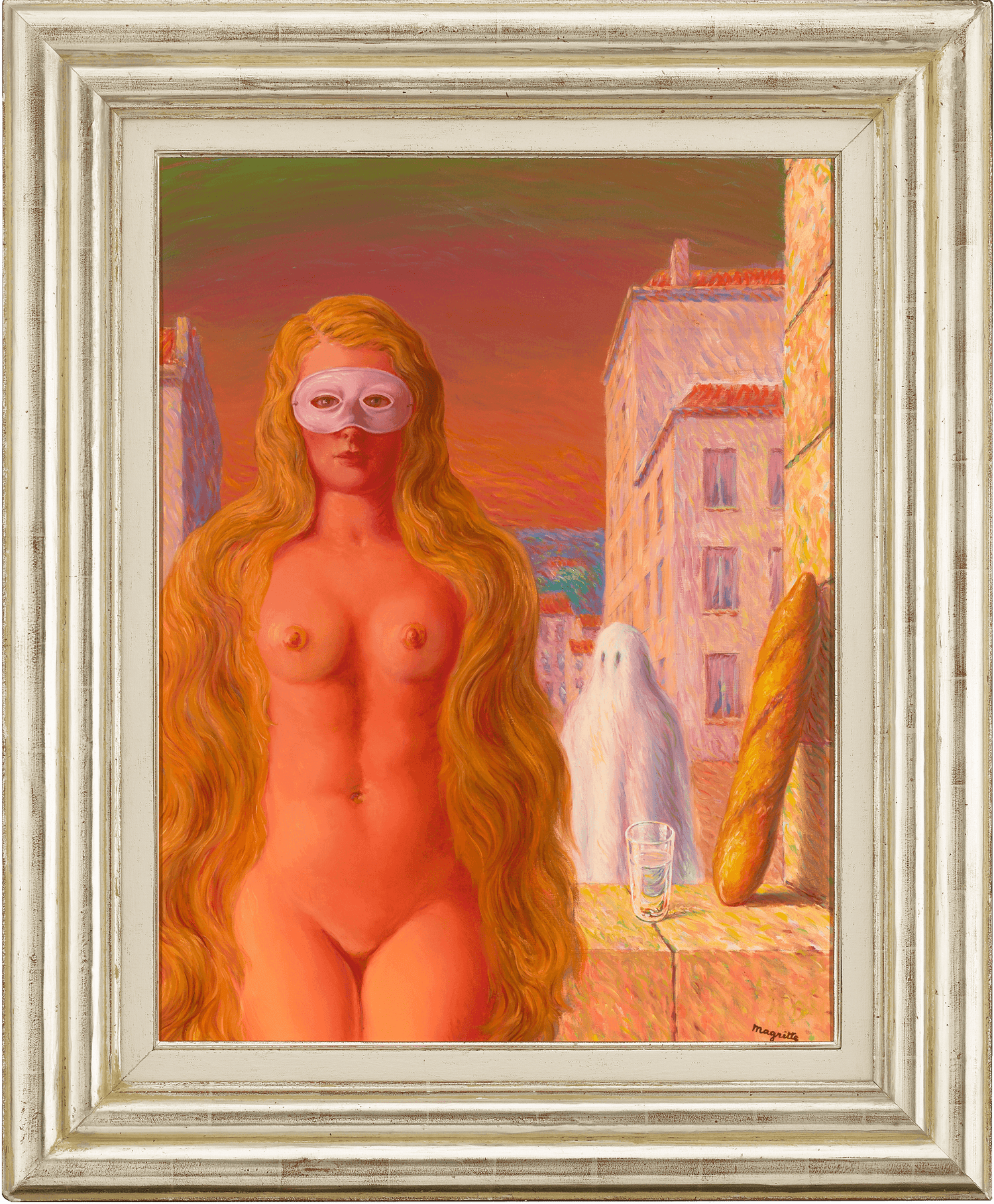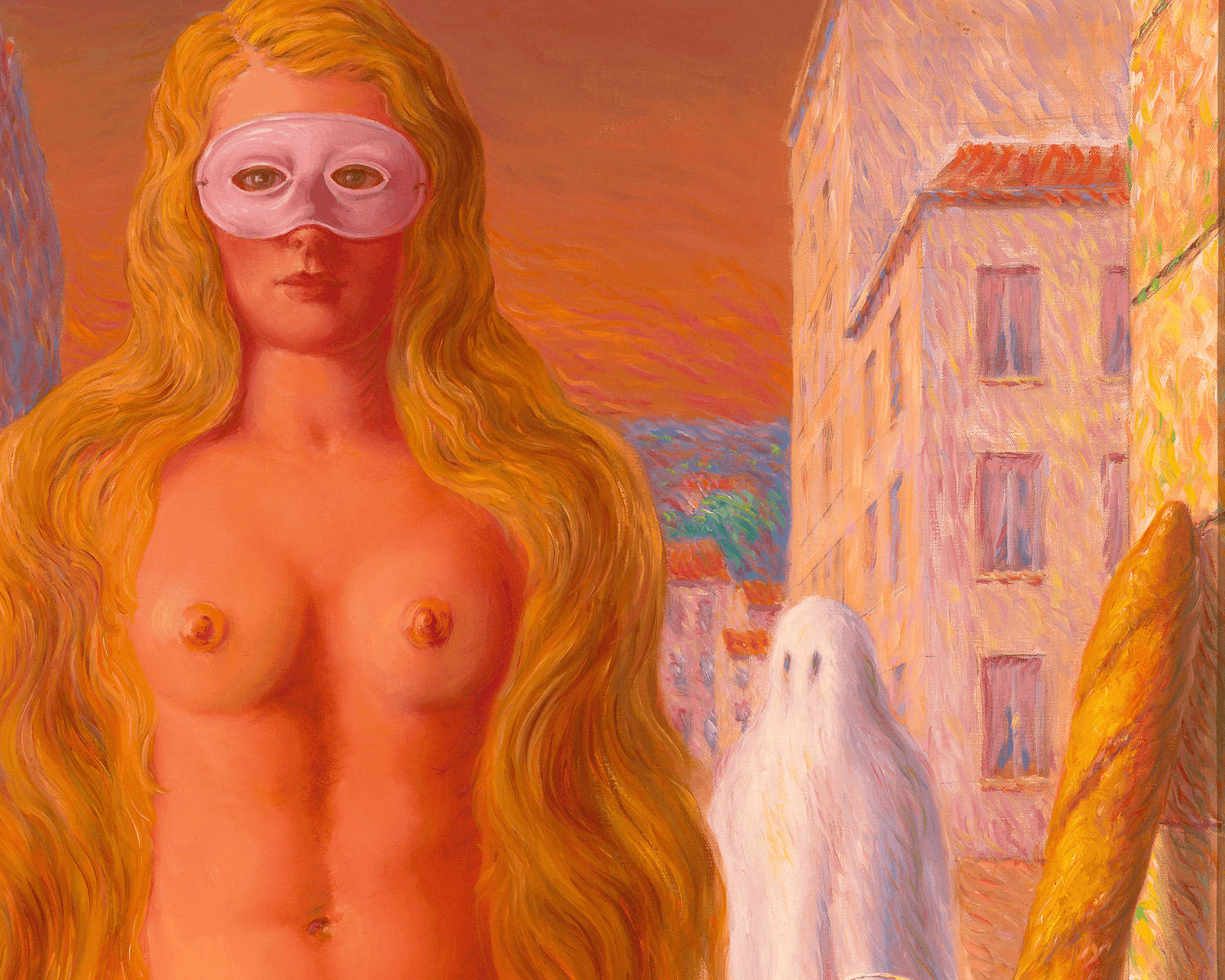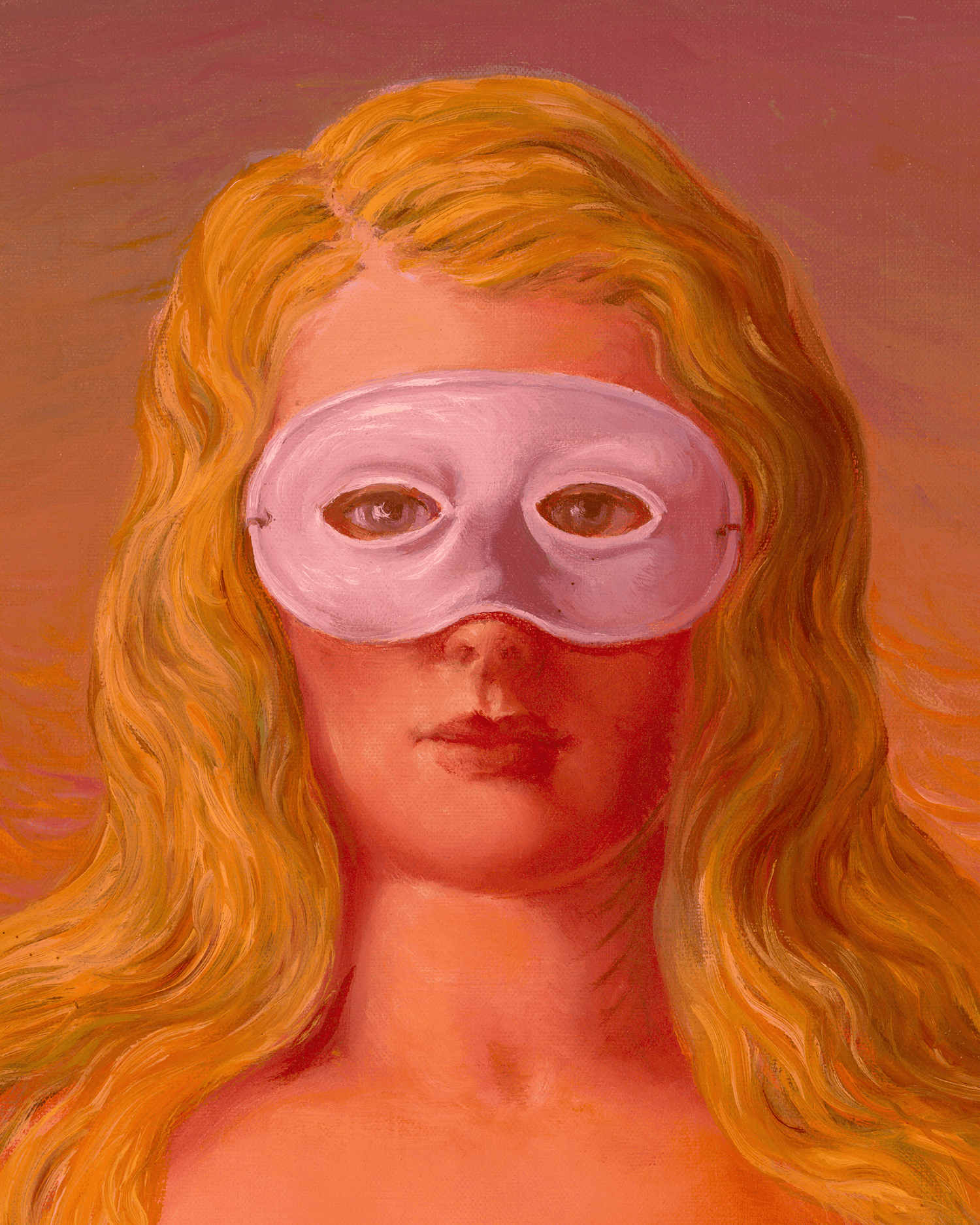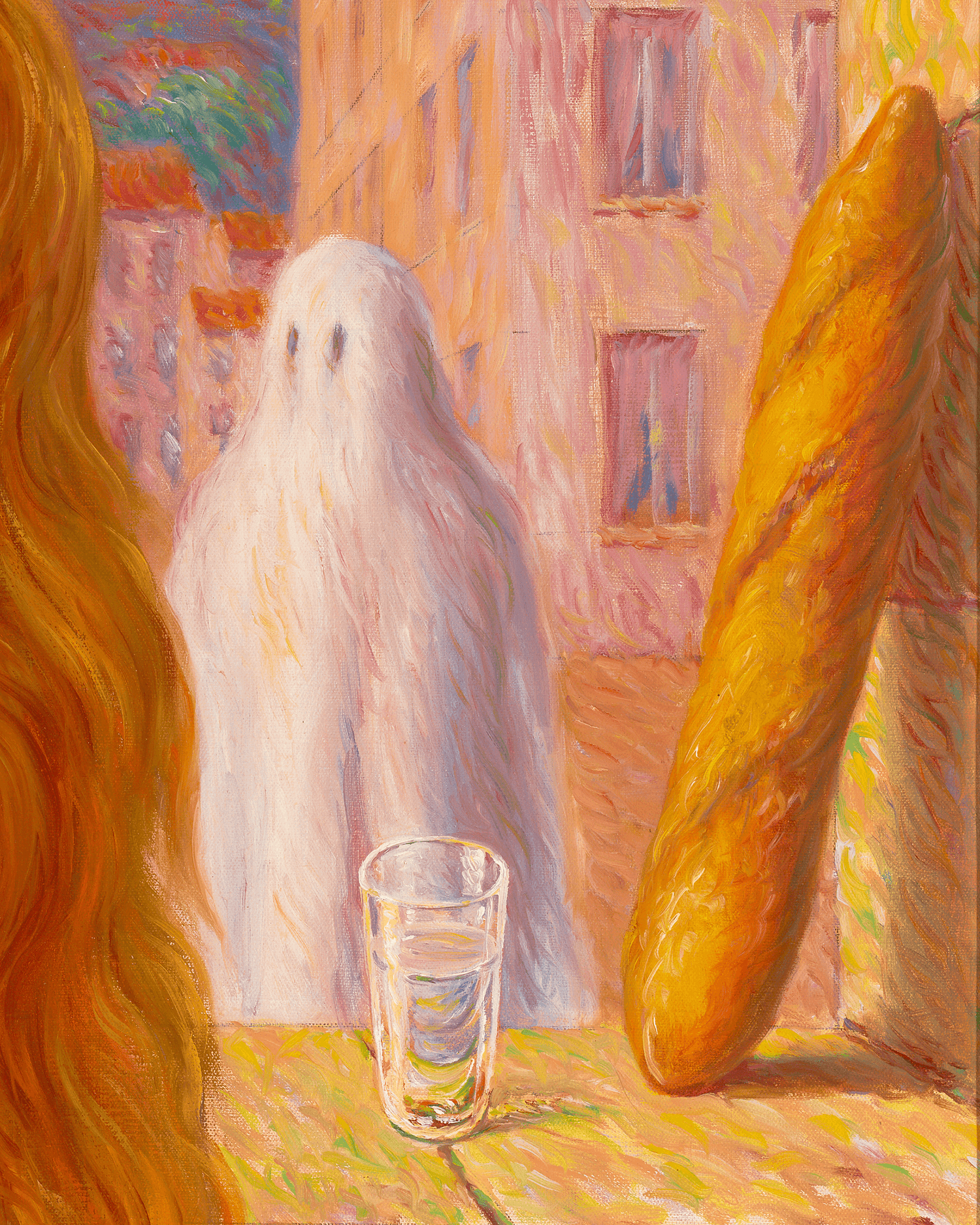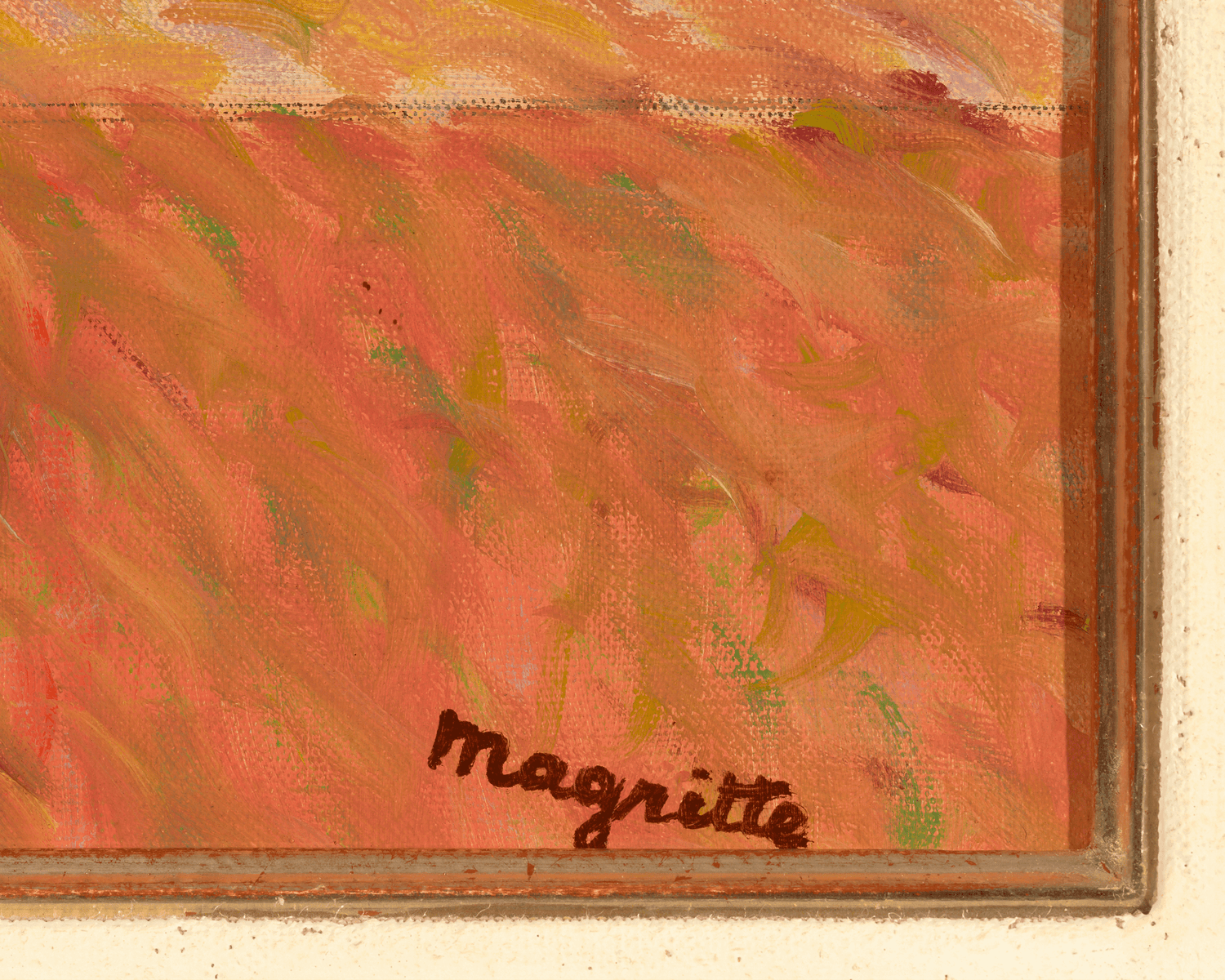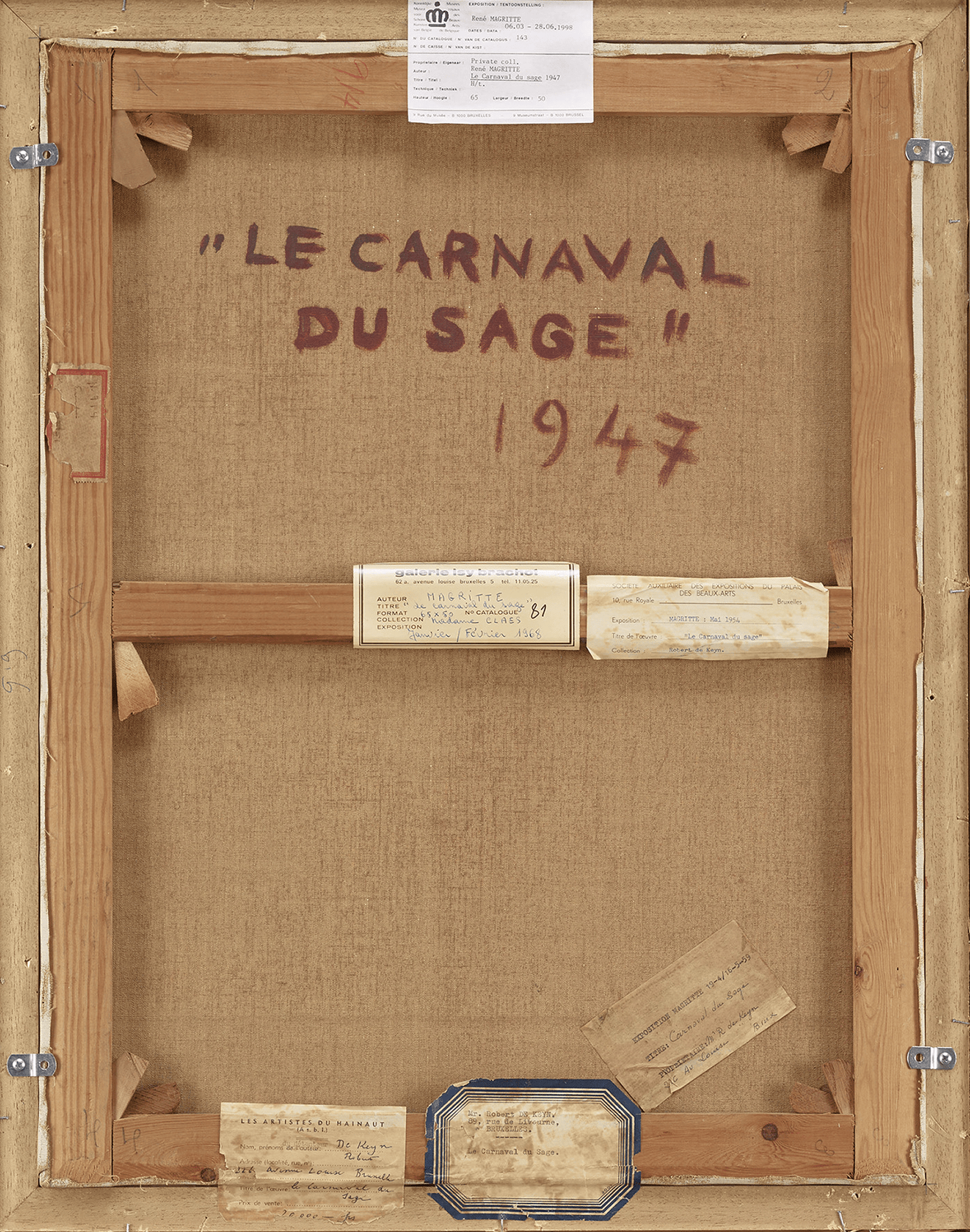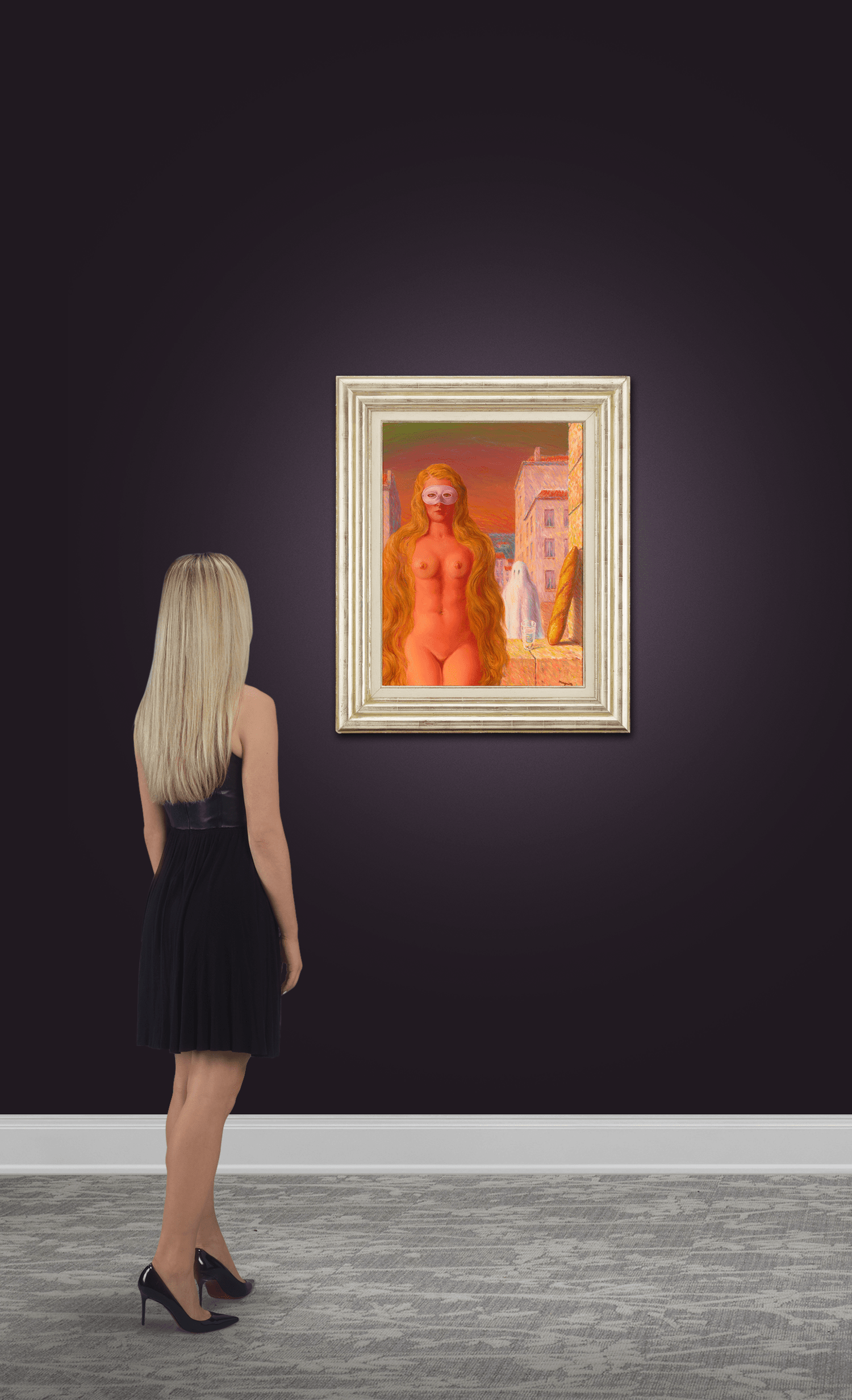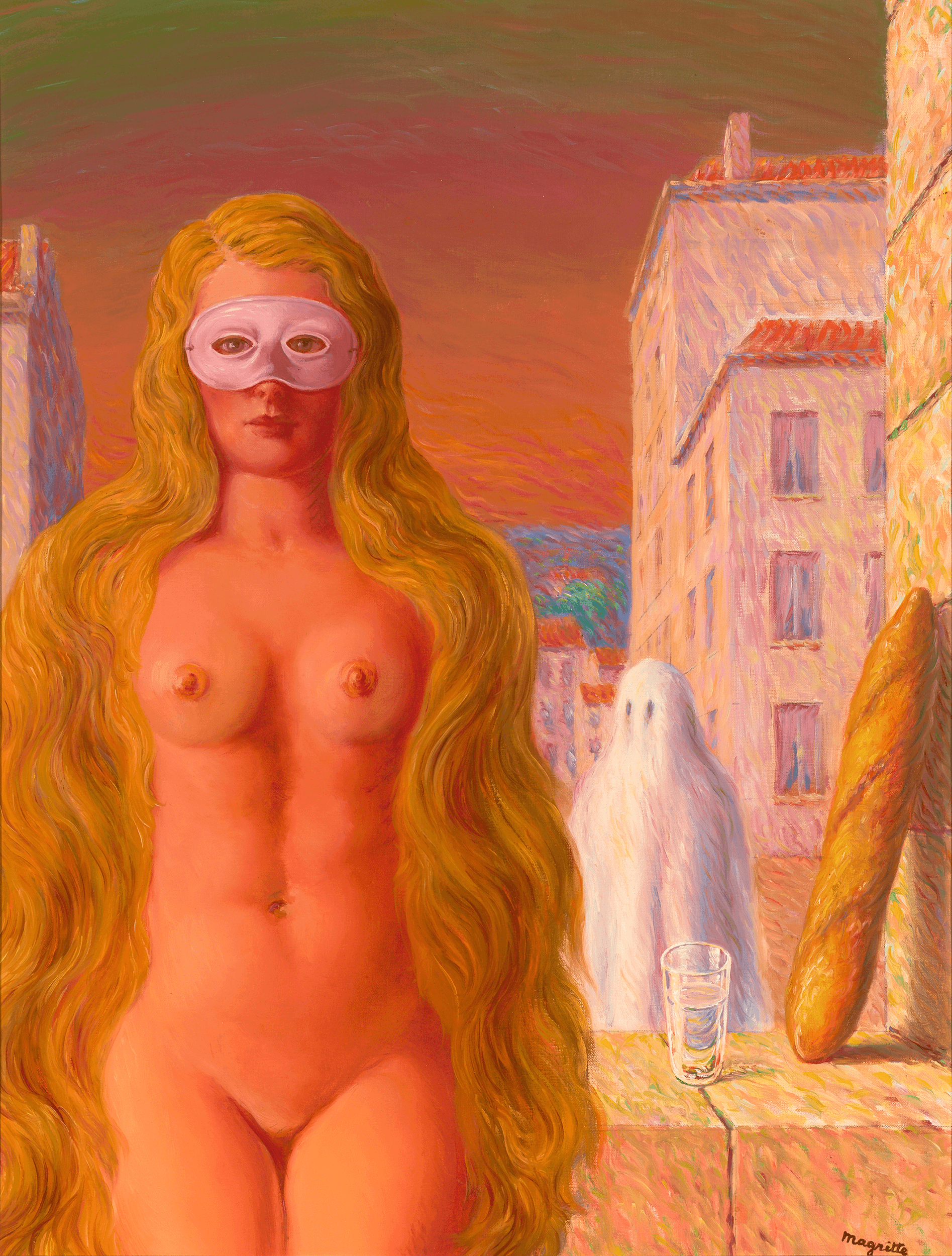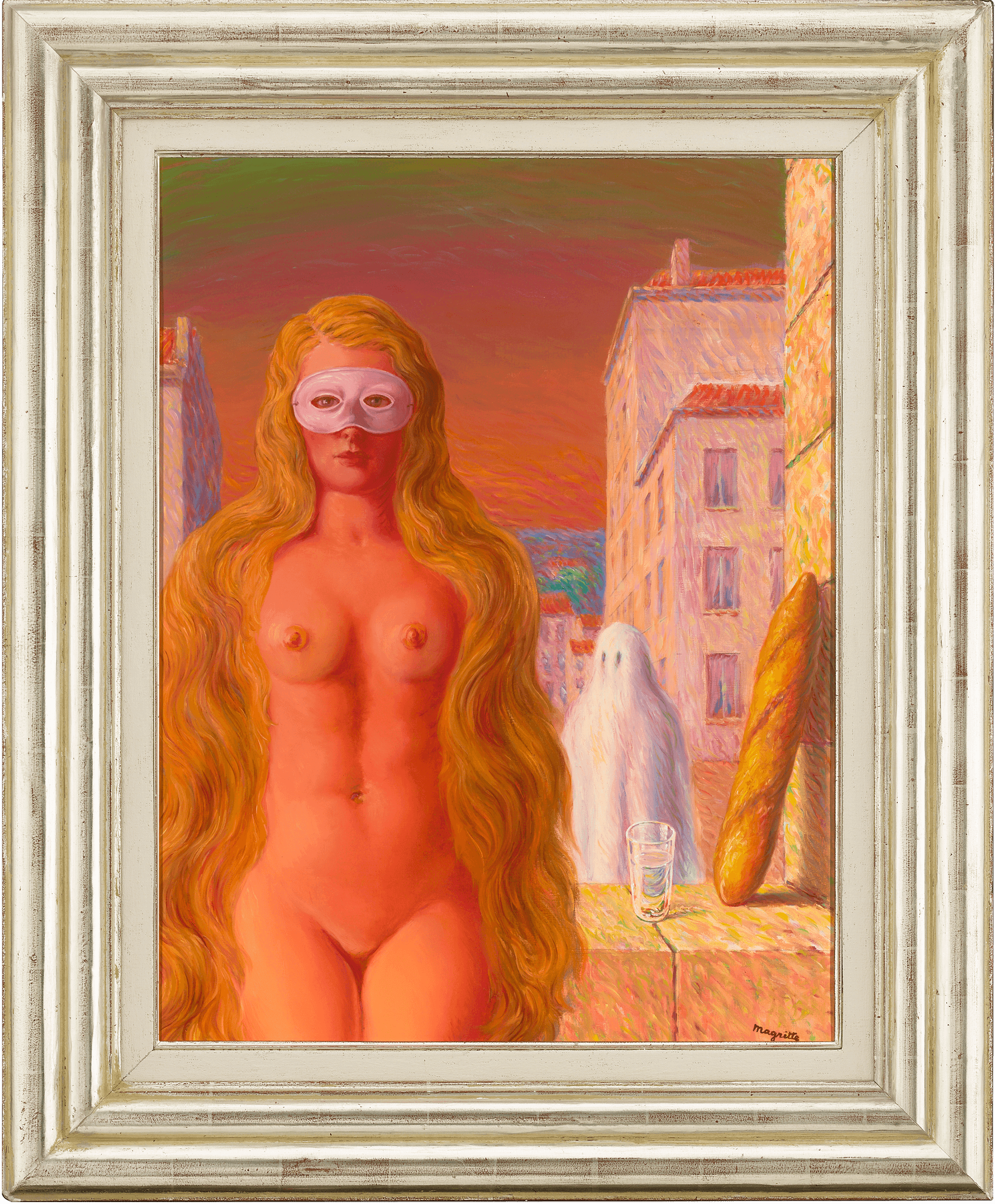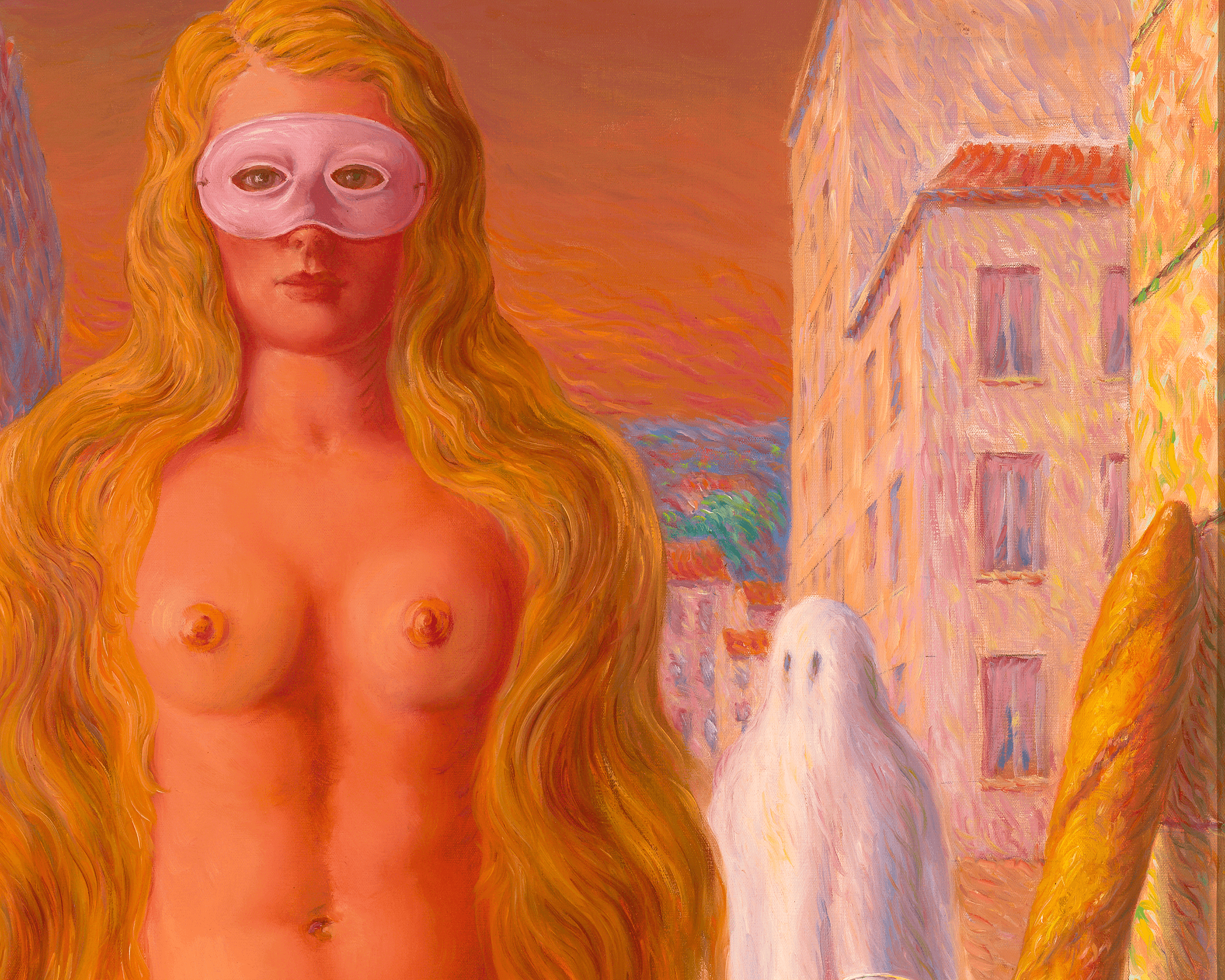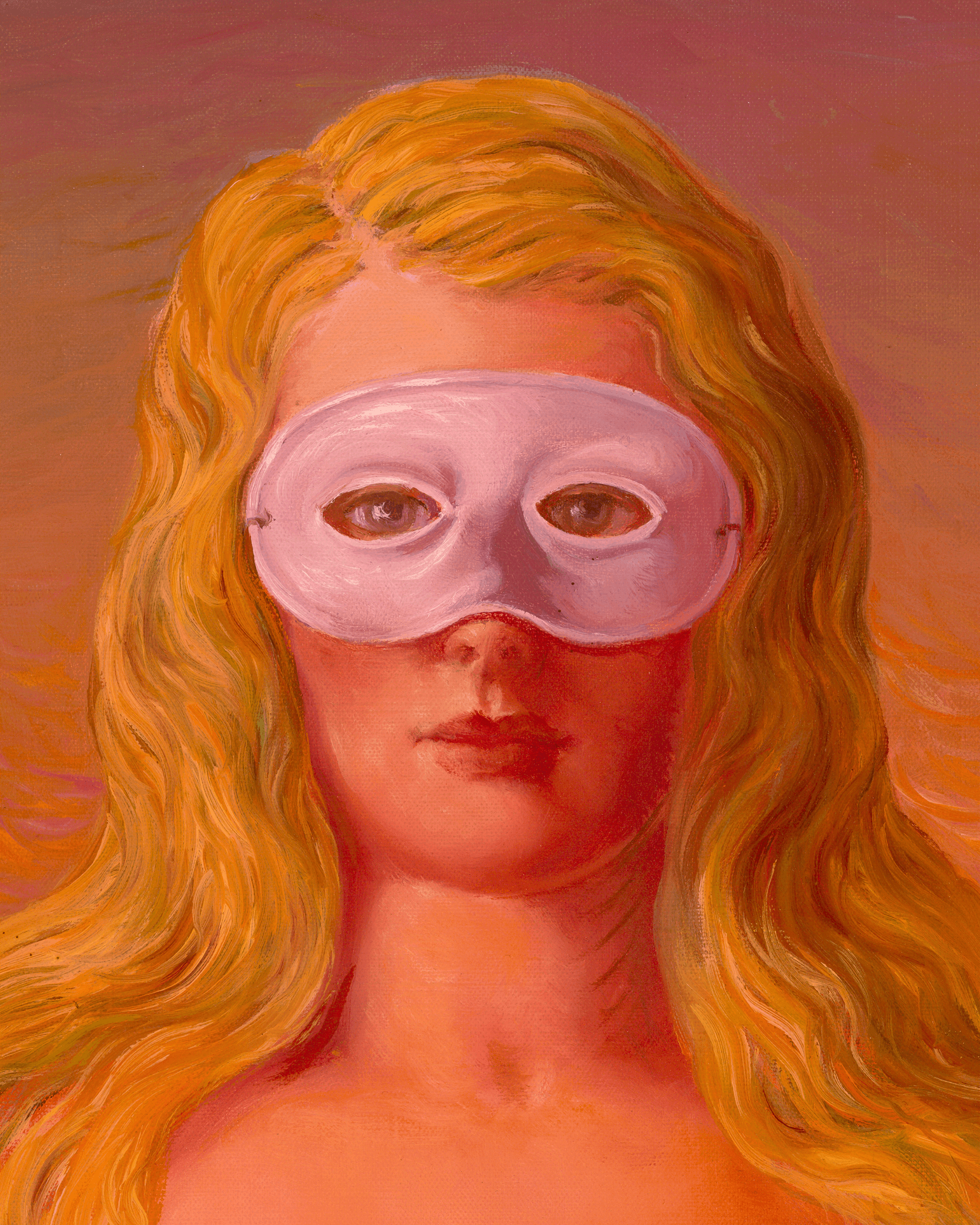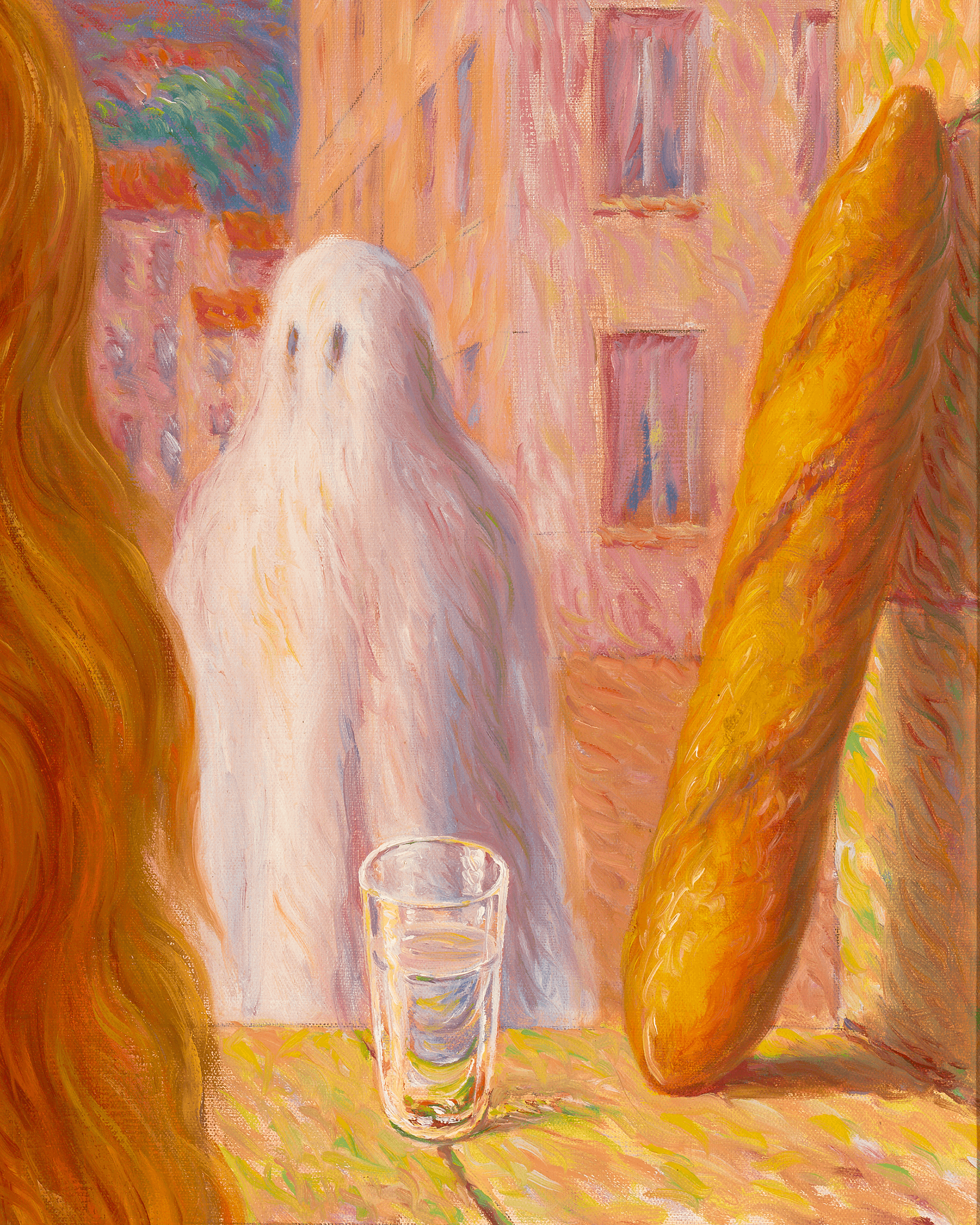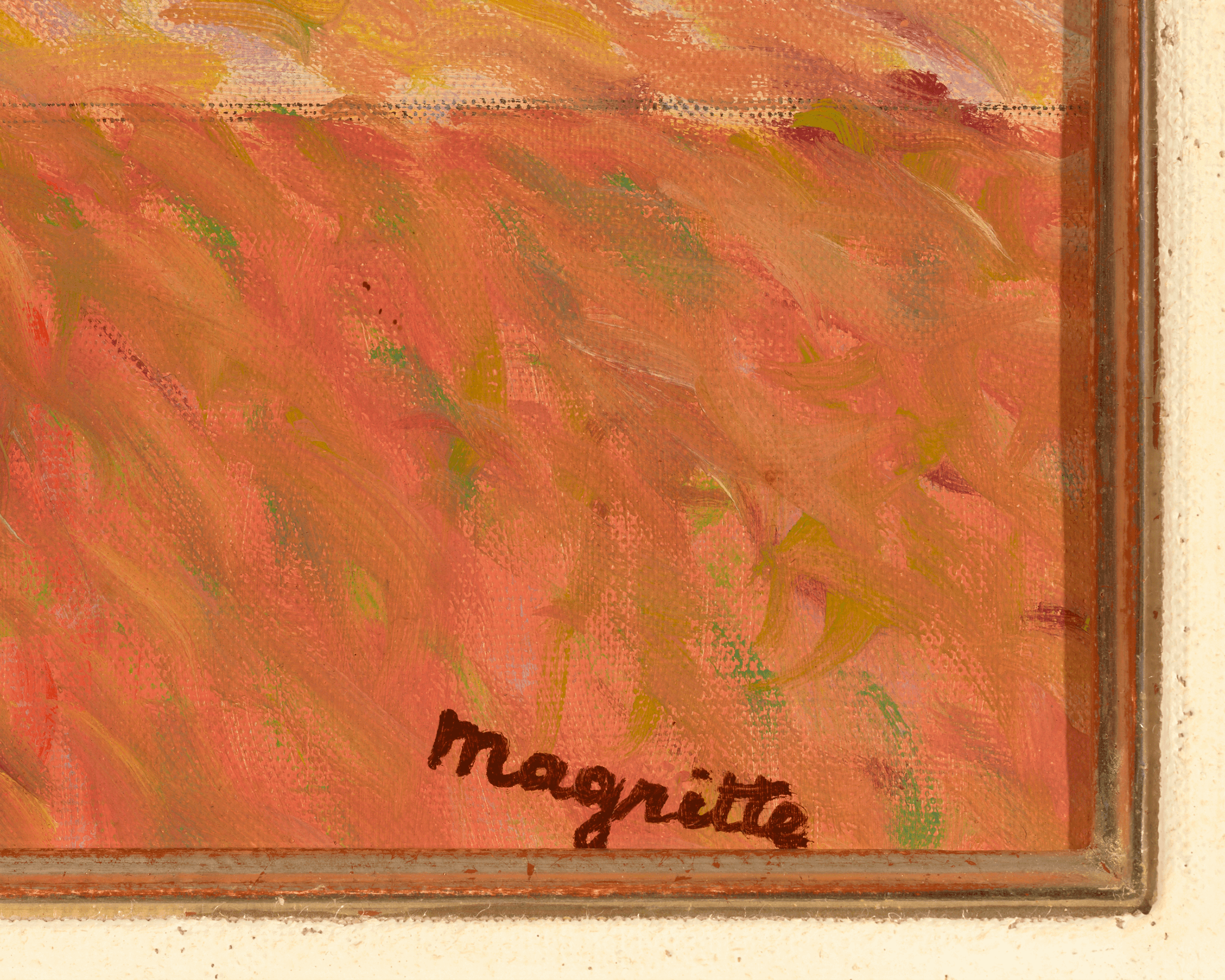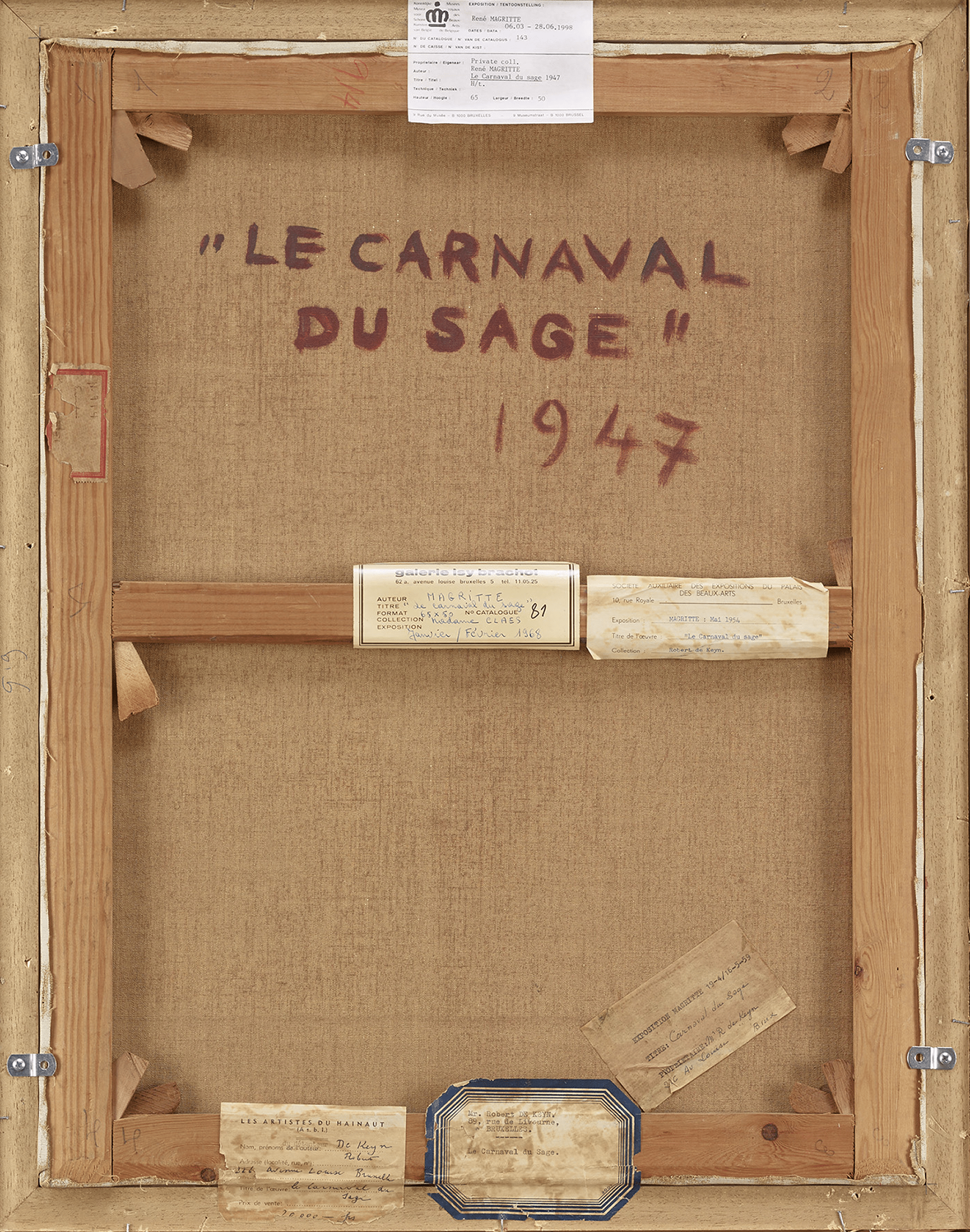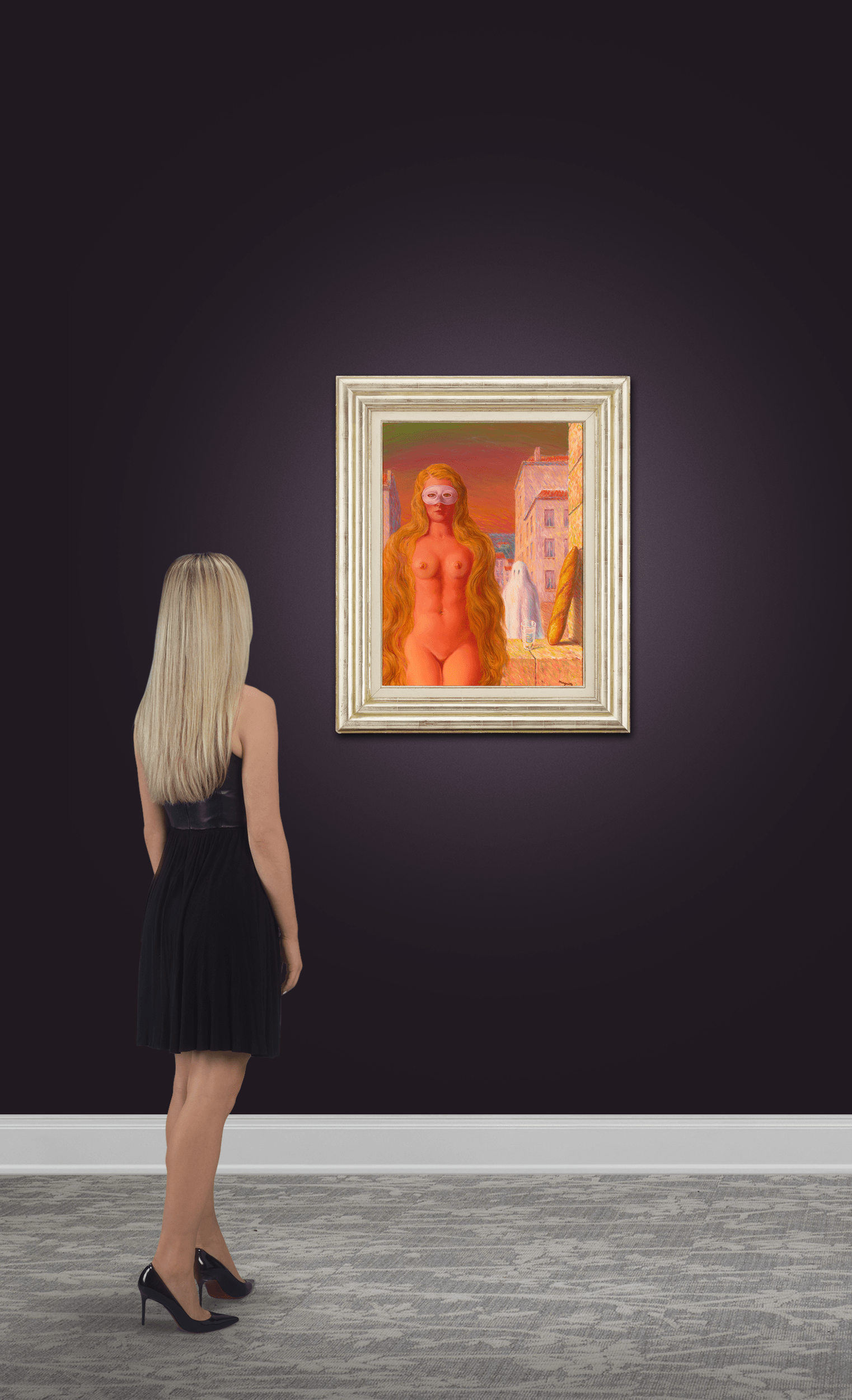M.S. Rau is committed to offering fine art of the highest caliber and we seek paintings and sculpture by historically renowned artists, often with impressive provenance. The large majority of our works of art come from private. . .
At M.S. Rau, we are committed to building a long-term, rewarding relationship with each and every client. That’s why your purchase is backed by our 125% guarantee.
Learn MoreLe carnaval du sage by René Magritte
- This enigmatic painting was composed by the great Belgian Surrealist René Magritte
- It is a tour-de-force example of the haunting, mysterious scenes that comprise his oeuvre
- Entitled Le carnaval du sage, the oil showcases several of Magritte's recurring themes
- View the Dossier
- Get complete item description here
To speak to one of our experts, call 1-888-711-8084
1898-1967 | Belgian
Le carnaval du sage
(The Sage’s Carnival)
Signed “Magritte” (lower right); titled and dated "Le carnaval du sage 1947" (en verso)
Oil on canvas
The enigmatic paintings of René Magritte have become some of the most familiar and celebrated of the Surrealist movement. Among the most influential of the Surrealist painters of the 20th century, Magritte is an artist of international renown, as beloved for his popular. . .
1898-1967 | Belgian
Le carnaval du sage
(The Sage’s Carnival)
Signed “Magritte” (lower right); titled and dated "Le carnaval du sage 1947" (en verso)
Oil on canvas
The enigmatic paintings of René Magritte have become some of the most familiar and celebrated of the Surrealist movement. Among the most influential of the Surrealist painters of the 20th century, Magritte is an artist of international renown, as beloved for his popular appeal as he is for the psychological intensity of his works. The present oil on canvas, entitled Le carnaval du sage, was executed in 1947 at the height of his career, and it is a tour-de-force example of the haunting, mysterious scenes that comprise his oeuvre.
Painted in the years following the Second World War, Le carnaval du sage showcases several recurring themes from Magritte’s oeuvre. Chiefly, a juxtaposition between the visible and the hidden is keenly felt. Throughout his career, Magritte explores the psychological obsession with revealing what is hidden, particularly with regard to the human face. In his Le fils de l’homme, he obscures the face of a man in a bowler hat with an apple, while his Les amants (Metropolitan Museum of Art) conceals the faces of two lovers with white sheets. In Le carnaval du sage, Magritte juxtaposes the blatant nudity of his central figure by masking her face, simultaneously revealing and concealing her from the viewer.
The work also incorporates two of Magritte’s most common tropes – the glass of water and the baguette. Lending the scene a strange sense of domesticity, they appear infinitely familiar and distinctly out of place, and thus heighten the uncanny effect of Magritte’s composition. In the background hovers a ghost obscured by a sheet, a figure which was of particular fascination to Magritte beginning in 1946. He once wrote to his fellow Surrealist Paul Nougé: "I saw in a dream an answer to the problem of the ghost: the traditional ghost draped in a sheet in a framed picture on the wall of a room.” The eerie echo of the woman in the foreground, the ghost is a fascinating and enigmatic addition to the unsettling scene.
Though firmly within the realm of Surrealism, Le carnaval du sage also represents the artist’s brief adoption of a colorful, more painterly style. The subtle, yet sunny colors of the background of the work reveals the influence of the Impressionist style on Magritte, particularly that of Pierre-Auguste Renoir. The figure herself is particularly Renoir-esque, evoking the burnished skin and exaggerated warmth of Renoir’s late colossal nudes.
As a whole, Le carnaval du sage is an undeniable masterpiece of Magritte’s postwar output. The work exemplifies the principle tenets of the Surrealist movement, presenting ordinary objects in extraordinary situations. Thus, Magritte successfully creates a work that is both infinitely fascinating and jarring in its psychological dissonance. It is also stunningly beautiful, with its brilliant color palette and statuesque nude figure. Similar nudes can be found in the Metropolitan Museum of Art (New York) and the Art Institute of Chicago.
In the same private collection for over 70 years, the work is fresh to the market, which has recently seen a revival of interest in the artist. A new record for a work by Magritte was achieved in November 2018 when his Le principe du plaisir brought $26,830,500 at Sotheby’s. Just one day later, his gouache L’Incendie achieved a remarkable $4,335,000; nearly half the size of the present piece, it is a far less impressive work and not nearly as striking. Le carnaval du sage represents a rare opportunity for the collector of 20th-century art to own a masterwork by one of the age’s most important names.
The work comes complete with original letters sent by Magritte to the owners discussing the work.
Dated 1947
Canvas: 24 3/4" high x 19" wide (62.87 x 48.10 cm)
Frame: 33 1/2" high x 27 1/2" wide, (85.09 x 69.85 cm)
View the Dossier
Exhibitions:
Exposition Magritte, Brussels, Galerie Lou Cosyn, 31 May – 21 June 1947
Artistes wallons contemporains, Luxembourg, Musée de l’état du Luxembourg, 12 November – 4 December 1949
Quelques artistes wallons contemporains, Paris, Musée d’art moderne de la ville de Paris, 11 January – 12 February 1950
São Paulo Biennial of Modern Art, 20 October – 23 December 1951, no. 22
Exposition sur Magritte organisée par l’Institut Provincial de l’Education et des Loisir, La Louvière, province of Hainaut, 21 March – 1 April 1954, no. 13
Magritte, Brussels, Palais des Beaux-Arts de Bruxelles, 7 May – 1 June 1954, no. 73
Magritte, Brussels, Musée d’Ixelles, 19 April – 16 May 1959, no. 66
Exposition Magritte, Liège, Musée des Beaux-Arts de Liège, 14 October – 10 November 1960
Brussels, Galerie Isy Brachot, Rétrospective René Magritte, January – February 1968, no. 81
Magritte, Lausanne, Esquisse du tableau reprise dans l’exposition de la Fondation de l’Ermitage, 19 June – 18 October 1987
René Magritte, 1898-1967, Brussels, Musées Royaux des Beaux-Arts de Belgique, 6 March – 28 June 1998, no. 143
Literature:
Letter from Magritte to Mariën, [30 August 1946], in Magritte Destination, no. 192
Artistes wallons contemporains, Brussels, Ministère de l’instruction Publique de Belgique, 1949, by J. Bosmant, no. 91 (illustrated)
Quelques artistes wallons contemporains, Brussels, Ministère de l’Instruction public, 1950, by J. Bosmant, no. 84
René Magritte, Brussels, Editions de la Connaissance, 1954, by R. Magritte, p. 35, no. 73
L’oeuvre de René Magritte, Brussels, Ed. de la Connaissance, by R. Magritte, 1962
René Magritte, Brussels, Musée d’Ixelles, 1965, by R. Magritte and L. Scutenaire, back page
Les Larmes d’Eros, Paris, 1961, by G. Bataille, p. 216 (illustrated)
René Magritte: 1898-1967 ,Ghent: Ludion, Paris: Flammarion, 1998, by G. Ollinger-Zinque and G. Leen, p. 150 (illustrated)
René Magritte: catalogue raisonné, Vol. II, Houston: Menil Foundation, Antwerp: Fonds Mercator, Paris: Flammarion, 1993, by D. Sylvester and S. Whitfield, p. 376, no. 615 (illustrated)
Provenance:
Robert de Keyn, Belgium, acquired from the artist in 1947
Private collection, Netherlands
M.S. Rau, New Orleans

| Maker: | Magritte, René |
| Period: | 1919-Present |
| Origin: | Belgium |
| Type: | Paintings |
| Style: | Modernism |
| Depth: | 2.63 in. (6.67 cm) |
| Width: | 27.5 in. (69.85 cm) |
| Height: | 33.5 in. (85.09 cm) |
| Canvas Width: | 18.938 in. (48.1 cm) |
| Canvas Height: | 24.750 in. (62.87 cm) |
At M.S. Rau, we are committed to building a long-term, rewarding relationship with each and every client. That’s why your purchase is backed by our 125% guarantee.
Learn More